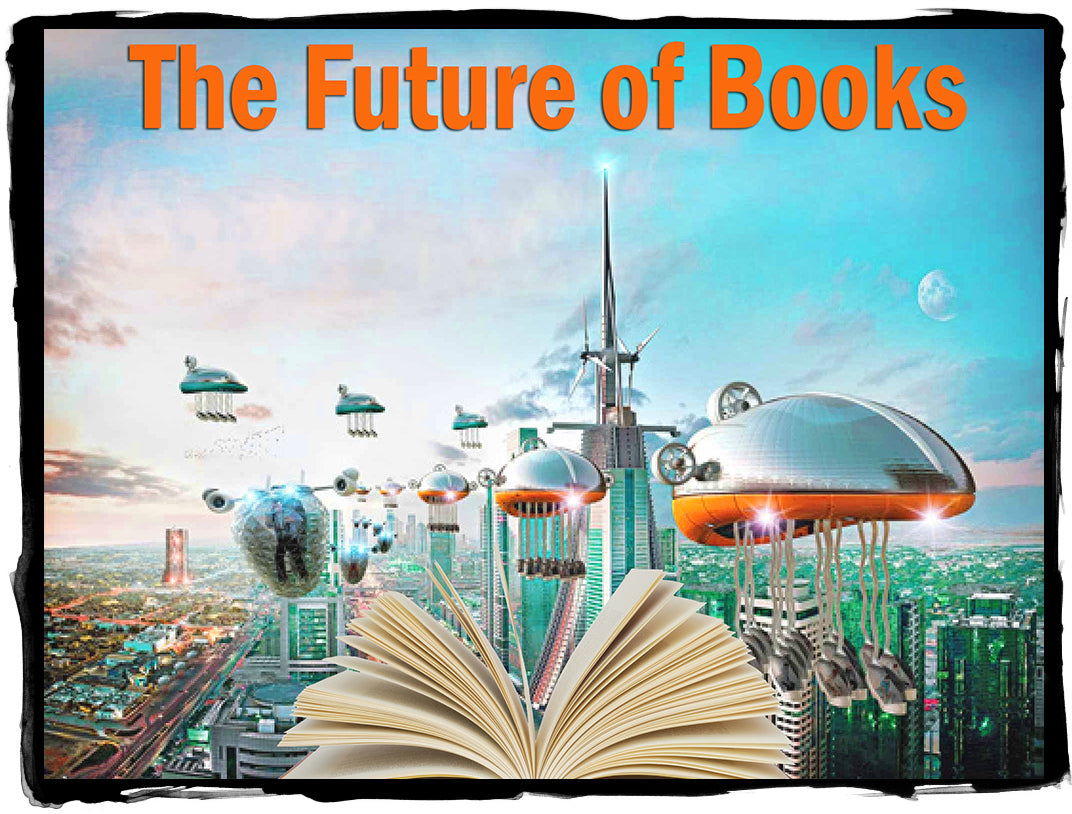
ebooks, the Future of Books?
Share
November 2024
Digital publishing appears to be reaching critical mass. Most consumers have an understanding of eBooks and eReaders, thanks to media coverage, as well as extensive reporting ahead of this year’s major book fairs. Apple’s new iPad, which can serve as an eReader, also brings more attention to the market for the digital technology.
The global eBook market is projected to be worth $32.19 billion by 2032 with eBook sales forecast to grow at a CAGR of 4.9% between 2022 and 2032.The growth of the digital book industry is propelled by several factors:•
Enhanced reading and listening experiences, featuring bookmarking, highlighting, and annotating facilities, which contribute to personalized book-reading experiences.• Increasing smartphone penetration and the utilization of NLP-powered multilingual translation, enabling readers to access content in their preferred language.•
Affordable subscription options and lending alternatives, offering customized offerings that empower users to manage and personalize their reading experiences.•
The accessibility and cost-efficiency of digital books are heightened by the availability of content anytime and anywhere.•
Global green initiatives actively discourage the use of paper, further promoting the adoption of digital books.
The Digital Book: Market of the Future? The discussion concerning the viability and chances of success of eBooks is not new. In recent decades, there have been talks as to when and whether the eBook will overtake the printed book in terms of popularity. Following music, newspapers, magazines, television, and radio, the digital transformation has now also caught up with the book industry. The market is undergoing a period of change – and is restructuring itself. eBooks are digital versions of printed books, which are distributed through the Internet. These files can be read on eReaders, tablets, personal computers, smartphones, and also on some mobile phones. eBooks can be published in a variety of file formats. In the United States, there is not much debate about formats, as the industry leaders – Amazon, Barnes & Noble, and Apple – allow customers to read their purchased books on a variety of devices. This multiple-application strategy mitigates the problem of competing file formats, as consumers rarely need to move a book saved in one format to a device that requires a different format. In Europe, where the eBook and eReader environment is less mature, publishers continue to discuss the merits of different file formats. Formats are especially important to customers, as few eReader or eBook companies in Europe provide the multipledevice convenience and flexibility as their US peers. That puts the onus on buyers to understand the file type, and whether it is compatible with their devices.
At this time, PDF and ePUB are the most common eBook file formats. PDF was created by Adobe in 1993 and is used primarily for special interest books. ePUB is generally used for mass market eBooks.3 Here is a brief discussion of the two file formats: • ePUB is an extensible markup language, like the HTML used for websites. The text adapts to a user’s device. If the user wants a larger typeface, the text will be redrawn on the screen. In contrast, a PDF document is like a series of photographs: every page will show up on the screen exactly as the designer laid it out, but the reader may find it difficult to enlarge or decrease the type size.
Benefits of eBook Publishing
Adapting to modern reading habits and offering digital products and services is critical to attracting and retaining today’s digital audience.
Convenience
While offering convenience and portability to your audience is the first priority, enhancing ROI and reducing expenses come in a close second. The publishing industry across the education and leisure segments can leverage cutting-edge eBook publishing platforms to simultaneously publish in multiple languages.
Trend and Reader-Preference Analysis
With the availability of powerful analytics, modern platforms can offer personalized recommendations to enhance consumer engagement. These can also offer insights into the types of content that perform better and are in demand among customers.PersonalizationFinally, eReaders, read-aloud features, and eBooks allow users to customize their experiences, something unique to the digital mode of reading. This creates a new stream of opportunities for publishers.
Unlike their print counterparts, ebooks open up exciting interactive and multimedia content possibilities. Many ebooks now integrate video, audio, 3D images, games, quizzes, and more that bring stories and information to life. Readers can also easily highlight passages, take notes, and annotate directly in ebooks across devices.
Some platforms even enable readers to share these annotations and highlights with friends reading the same ebook title, allowing for collaborative analysis and discussion. With customizable fonts, layouts, and accessibility features, ebooks can be fine-tuned to particular reading preferences or needs. As technology progresses, we can expect ebooks to become more immersive and engaging experiences.
One of the most practical advantages of ebooks is that they take up no physical space and use minimal paper. A single e-reader can store thousands of ebook files without adding clutter at home. For libraries and bookstores, this space-saving design also offers a wider selection of titles since shelf space and storage capacity are no longer limiting factors.
Adoption of Artificial Intelligence Technologies
Advanced ebook publishing tools will help expedite the creation of learning resources and reading material. They will augment authors’ creativity and help them push the boundaries of their imagination, thus enhancing their storytelling capabilities. Additionally, NLP will accelerate the transition into multiple languages and make the content more aligned with the cultural and societal nuances of the reader. This will help deliver personalized learning and reading experiences.
Rise of Independent Publishing
Self-publishing and distribution platforms will allow authors to enter newer markets faster and more cost-effectively. They will eliminate the barriers of traditional publishing by facilitating compliance, recommending culture-appropriate examples, and flagging perceivably offensive content. This will help transcend geographical, linguistic, and cultural barriers and promote diversity and inclusion in the publishing industry.
Concerns of Intellectual Property
While generative AI is already creating waves across the globe to streamline copyright initiatives, the publishing industry is among the sectors deeply affected by this technology.
Assigning adequate copyright to the author and managing intellectual property rights with interspersed AI-produced and manual content can be a challenge going forward. Increased regulatory oversight will govern how things take shape in this particular area. While maintaining transparency in content creation workflows will be emphasized, publishers will compete to establish dominance in their eBook publishing processes.
Multi-Device Accessibility
With smarter mobile devices and AR/VR devices entering the market, ebook publishing will accommodate newer publishing formats to entice readers by offering immersive experiences. Further, ensuring seamless experiences across devices and convenience of portability will be significant in determining the successful adoption of these new technologies.
Tap into the Burgeoning Market
With the heightened adoption of online learning platforms and increased emphasis on inclusive and accessible digital eBook platforms, the market is ripe with immense potential to harness. Educational, informative, and leisure publishers must adopt the latest tools to facilitate the creation of engaging, multilingual content with AI-powered intelligent assistance.
At Old Hippys, we are proud to offer a vast library of digital reading and digital tools/forms to enhance your life and interests.
Check out our digital libraries at oldhippys.com
